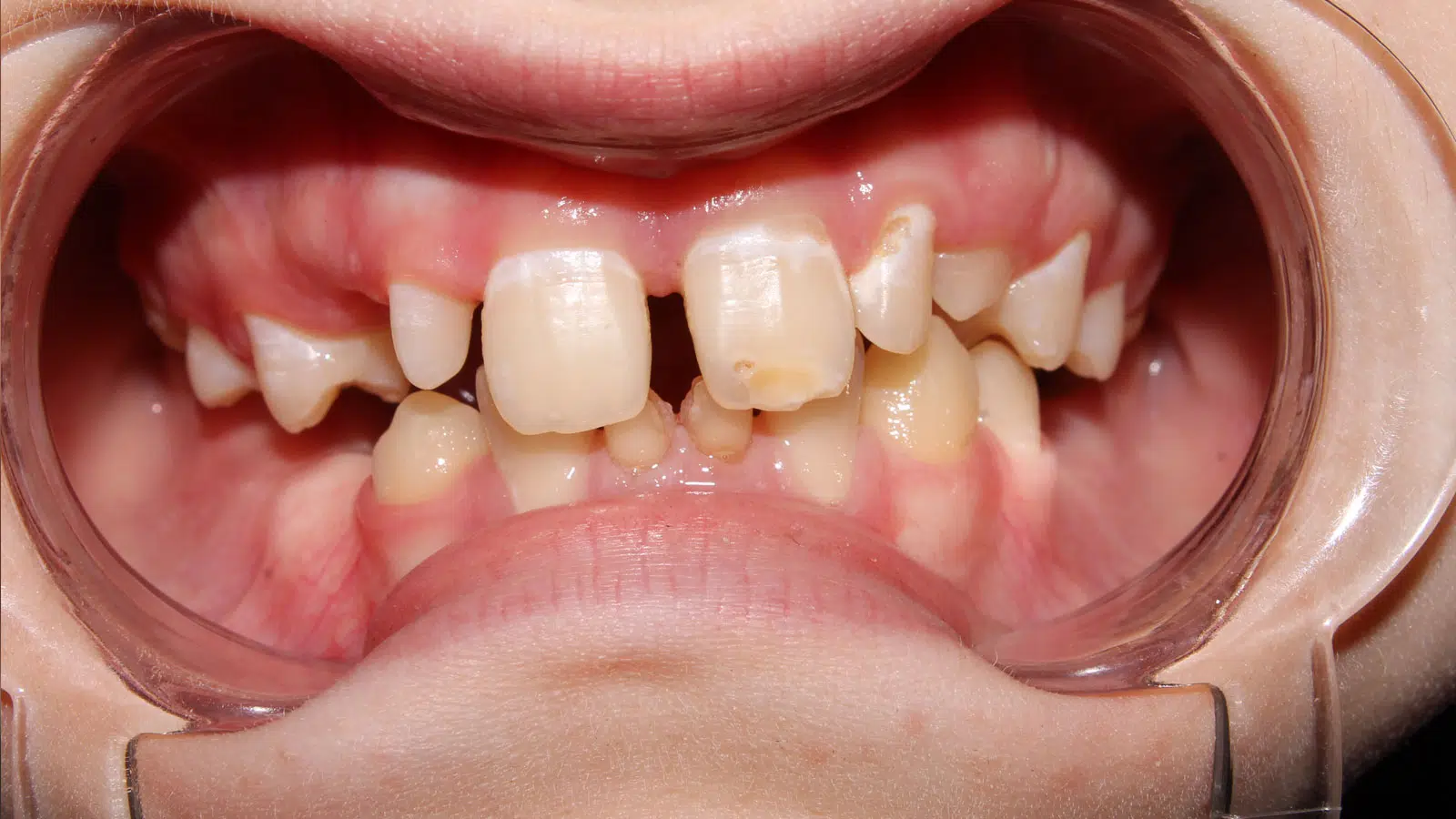Tooth gaps refer to a condition where the space between two or more adjacent teeth exceeds the normal physiological limit.
In a healthy dentition, the gap between adjacent teeth is typically 0.5 mm.
These gaps can occur in any area of the mouth but are most commonly found between the upper front teeth. While tooth gaps are primarily an aesthetic concern, they can sometimes lead to functional issues such as speech difficulties.
Additionally, they may contribute to gum inflammation and potentially loosen the teeth on either side of the gap.
What Causes the gaps between teeth:
- Small teeth or large jaw size compared to the size of the teeth: This provides additional space for the teeth to move and separate from each other.
- Missing tooth: The child may be born with a jaw containing a missing tooth.
- Periodontitis: This problem can cause bone absorption in the area between the jaws over time, which leads to some teeth moving from their place, leaving a gap.
- labial frenum: This is the tissue that attaches the upper lip to the gums. If it’s too large, it can pull on the teeth and create a gap.
- Tooth loss: When a tooth is lost, the surrounding teeth may shift, creating a gap.
- Habits like thumb sucking or nail biting: These habits can put pressure on the teeth and cause them to move, creating gaps.
- Genetics: In some cases, tooth gaps can be inherited.
Treatments for tooth gaps:
Braces:
Braces work by applying gentle pressure to the teeth, gradually moving them closer together to close the gaps over time.
Dental veneers:
Dental veneers close gaps by bonding thin, custom-made shells of porcelain or ceramic to the front surface of the teeth. These shells are designed to be slightly larger than the natural tooth, covering the gap.
Dental implants:
If a tooth is missing, dental implants are the best solution to replace the missing tooth.
Dental bridge:
A dental bridge replaces a missing tooth by spanning the gap between the remaining teeth. The bridge is cemented in place, supported by the adjacent teeth.
Dental bonding:
In dental bonding, a cosmetic filling is applied to the teeth and shaped to fill the gap. A special light is then used to harden the filling. Bonding is best for small gaps, as it is less durable than other options and may be prone to breakage for larger gaps.



